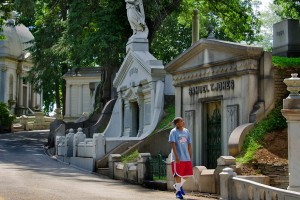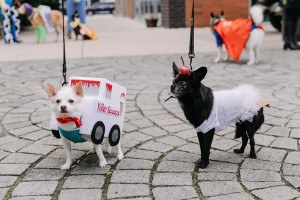Is Driving Going Out of Style in Philly?
THERE’S BEEN ANOTHER comeback here in Philly, if you haven’t noticed: grass. The city that spent much of the 20th century painting itself in asphalt is, in the 21st, desperate to get back to parks and yards and plazas. To choose green over black, people over cars. Studies have been done: It’s about quality of life, economics, image, the environment … everything is better with a little more green.
Last August, the city created something called the Pedestrian Plaza Program to help turn “underutilized” street space—extra-wide swaths of road, or those weird triangles where multiple streets converge—into public spaces with benches, landscaping and bike parking. There’s also the behemoth public Penn Park at 31st and Walnut, now lush with grass and joggers in place of asphalt. And there’s that new plaza outside 30th Street Station, which turned parking into public hang-out space. And, maybe most importantly, the city’s brilliant “Green City, Clean Waters” program, which involves, yes, more grass to help keep storm water from running off all that asphalt and overloading our sewer systems. Seems we’ve entered the age where “Put a Park On It” is an official city motto.
The face of this movement at the moment might be that of Diana Lind, the spirited head of the nonprofit Next American City. I heard her talk last winter about “creating vibrant cities in the face of car culture” at TEDx, the national community lecture series about “ideas worth spreading,” and she’s since become one of the most vocal proponents of having the city rethink—or at least think about rethinking—the future of I-95, long criticized for cutting off the Delaware River waterfront.
Look at Dallas, she told the crowd. That city, she explained, was similarly bifurcated by a highway, but Dallas knit itself back together by building a five-acre park on top of that highway, complete with restaurants and playgrounds and dog zones: It’s “the city’s front lawn, a space where anyone can come and hang out.” Pleasant and forward-thinking as that is, projects of this scale can be staggeringly pricey. Dallas’s park will run the city more than $100 million; something like Boston’s “Big Dig” could cost upwards of $15 billion, Cutler estimates. Predictably, city officials have thus far deemed such a park out of reach. Though there’s debate about that, too.
To some, the very notion of spending any dollars, let alone millions, on a park to hide a highway seems as insane as ivory-tower mumblings about getting rid of driving. Lind, for her part, tells me she’s not anti-car, but rather “multi-modal,” a nerdy yet sweetly inclusive phrase that kind of gets at the future I think we’re moving toward.
Many of the Philly moms I know—some of whom probably use cloth diapers—would laugh (or cry) at the idea of schlepping babies and small children around town in anything but a car. As someone who doesn’t have babies to schlep, or multiple jobs that I must rush off to, or a career driving a delivery truck, I do realize that for many—if not most—people, driving isn’t a luxury, but a necessity. Any real, properly running city will always need people to drive in it.
But at some point, all of our small changes are going to overflow, creating a shift. People who don’t need to drive won’t want to—because their friends aren’t, because it’s expensive and no longer convenient, and because it’s just not great for us as a city. Sure, we’ll all indulge sometimes, but in 20 years, it’s not so crazy to imagine that a new “multi-modal” norm will mean leaving the car parked. And that the rules of the road won’t merely be about getting out of the way.


